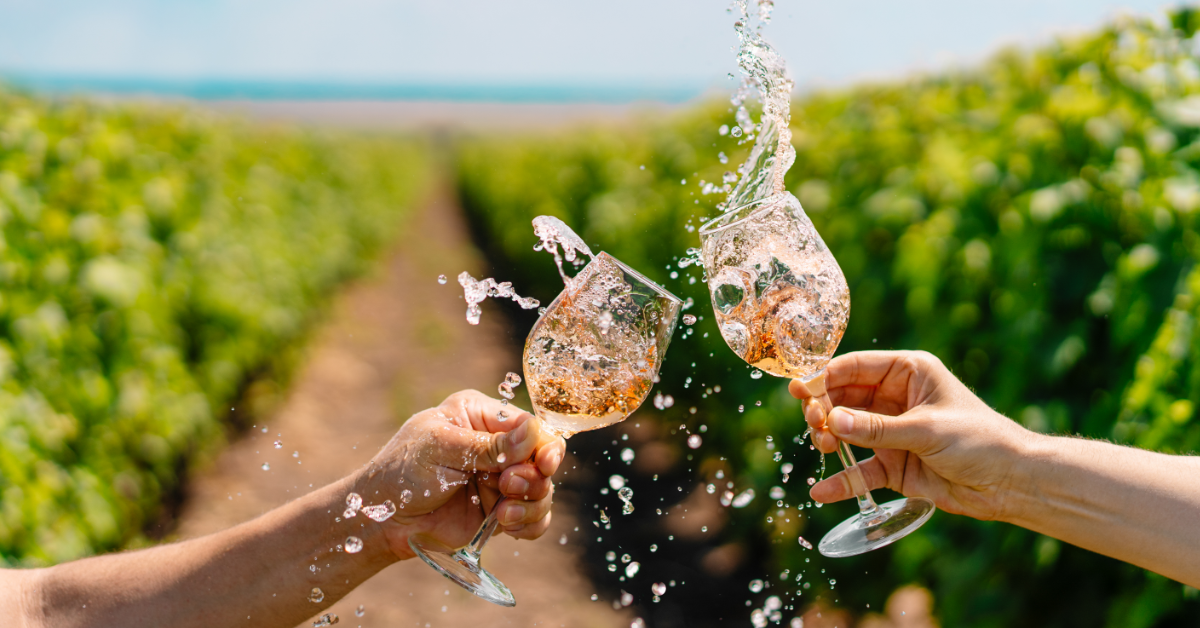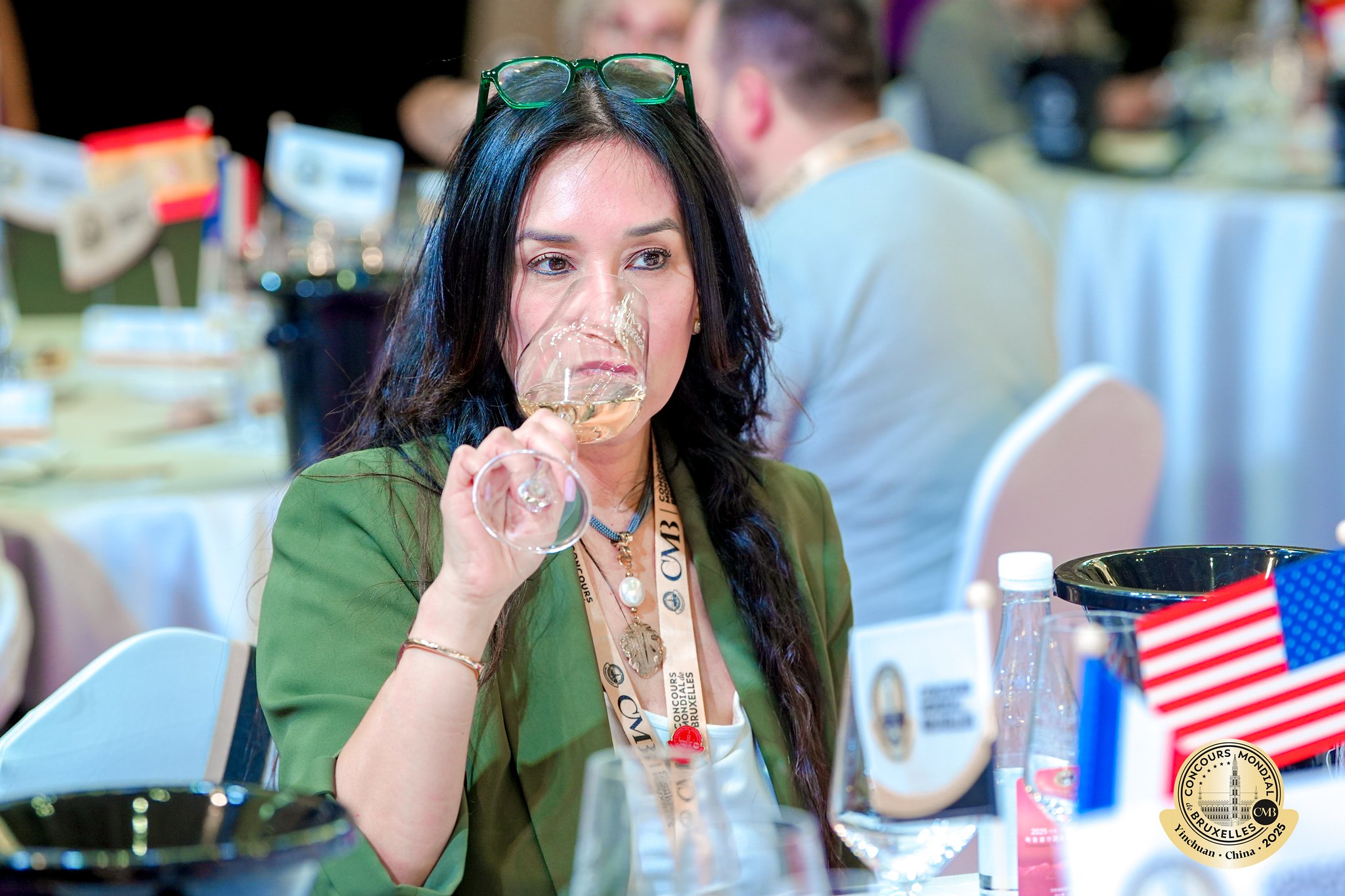Rosé Made in Romania

The wine region of Dobrogea, located on Romania’s Black Sea coast, has been selected by the Concours Mondial de Bruxelles to host the CMB Rosé Wines Session. The tastings will take place from 28 to 30 March in the town of Constanța. Let’s take a look at some typical Romanian grape varieties
The rosé wine market in Romania has experienced spectacular growth over the past ten years, a development driven both by changes in consumer preferences and the intense promotion made by producers of this color and the associated lifestyle.
A market study conducted in 2023 showed that rosé wines accounted for 20% of the total wine consumption in Romania. Among the growth factors identified by the study’s authors were the seasonal appeal of rosé, its versatility in pairing with food, and the growing interest in lighter, easy-to-drink wines.
Although rosé occupies an important segment in consumer preferences, in terms of production, rosé wine represented approximately 7% of the total amount of wine produced in Romania, about 241.5 thousand hectoliters, from a total of 4.5 million hectoliters produced in 2023 (a 15% increase compared to 2022).
This percentage also results from the fact that white wines (around 65% of production) and red wines (28% of production) have historically been much more deeply rooted in Romania’s winemaking traditions. The discrepancy between the 7% production share and the 20% consumption share reflects the dynamics between supply and demand on the Romanian market but also represents an opportunity for Romanian producers to exploit this growing segment.
Native Grape Varieties
Romanian consumers have a strong preference for local wines, with about 90% of the wine consumed being produced domestically. Most of the rosé wines produced in Romania are made from black grape varieties, both native and international. Preferred winemaking techniques include short skin maceration or gentle pressing to preserve the light rosé color, ranging from rose-peach, salmon-rose, or grapefruit-rose shades. This also reflects the fact that Romanian consumers tend to prefer lighter, fragrant rosé wines with fruity notes and high acidity.
The main native grape varieties used for producing rosé wines in Romania are: Feteasca Neagră, Busuioaca de Bohotin, and Băbeasca Neagră.
Fetească Neagră
Fetească Neagră is a pre-phylloxeric variety originating from the Uricani area in the Moldova region. It does not have confirmed pedigree or descendants and was first mentioned in 1790. It is resistant to frost and drought and can accumulate high levels of sugars, acidity, and anthocyanins. Feteasca Neagră is cultivated over an area of 3,312 hectares. In its rosé versions, it can develop aromas of red fruits and spices, with good structure, and tends to have a light bluish tint to its color.
Busuioaca de Bohotin
This grape variety, originating from the Bohotin area in the Moldova region, is historically associated with rosé wine production due to its violet color with pinkish hues. It is renowned for its floral-herbal aromas, highlinghting rose petal and basil aromas. Traditionally, wines from Busuioaca de Bohotin were vinified with residual sugar, but today most rosé examples are dry.
Băbeasca Neagră
Another pre-phylloxeric Romanian native red grape variety, Băbeasca Neagră is occasionally used in rosé wine production. Also originating from the Moldova region and planted over 2,525 hectares, this grape variety produces wines with light body, fruity character, and higher acidity, characteristics that make it ideal for fresh, easy-to-drink rosé wines.
In addition to the three native varieties mentioned, Romanian producers also use international varieties such as Merlot, Cabernet Sauvignon, and Pinot Noir for their rosé wines. Recently, Syrah has gained increasing popularity due to its spicy-fruity character.
The growing popularity of rosé
The growing popularity of rosé wines in Romania has been caused by changes in consumption preferences and the fact that most consumers associate this color with summer occasions, closely related to the holiday period. Although rosés with residual sugar remain popular options, there is a visible increase in demand for dry rosés with complex aromatic profiles. As in other markets, trends linked to a healthy lifestyle have influenced consumer preferences, with many seeing rosé as a light and easy-to-drink option with lower sugar and alcohol content.
The COVID-19 pandemic enhanced the development of online wine sales in Romania. While these channels were previously underdeveloped, they have become essential for many wineries, allowing them to reach consumers directly and adjust to new consumption behaviors.
Another factor contributing to the increased visibility of rosé wines has been the growth of wine tourism in Romania. Tastings, events, and festivals organized at wineries have allowed consumers to explore various tastes and winemaking styles, boosting interest in rosé wines.
Valentin Ceafalău


